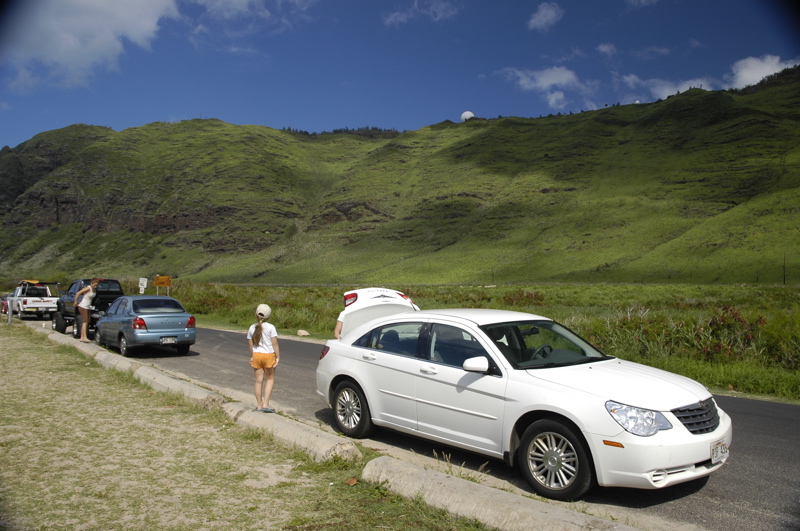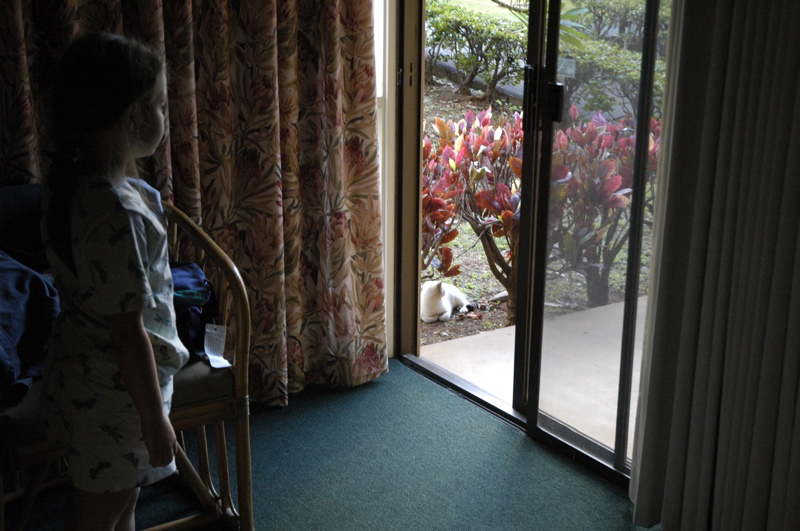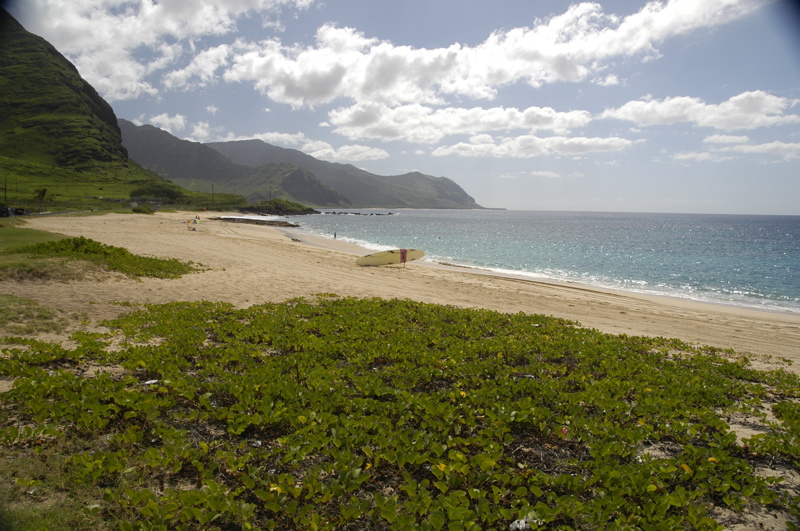For the next week or so the blog will cover our travels in Hawaii, making it less of an Airstream blog and more about travel in general. But for the aspiring full-time RV’er there’s still relevance. Almost every full-timer I know has broken out of the mold and left the Airstream behind for a period of time, just as you would leave your stationary house behind. There are, sadly, some places Airstreams can’t go.
But although our mode of travel has changed, our style of travel hasn’t. We still prefer to avoid the crowds and programmed adventures in favor of simple and real experiences. In Oahu, this means zipping away from the Waikiki crowds. We’ve taken up residence along the leeward side of the island, a place where people in online forums have reported “there’s not much to do.”
By that they mean that there are no helicopter companies, no parasailing, no museums, no submarines, musicals or dolphin adventures here. All of those things are available in Waikiki and the surrounding area. Here, we have only the basics: wide-open and uncrowded beaches, crystal clear water, snorkeling, hiking, bird songs, and the ruins of a historic site called a heiau. That’s the sort of stuff we came here for, so even though we are on the “tourist resistant” side of the island we should be plenty occupied.
Although we can certainly find a lu’au if we want one, about ten miles down the road. And our hotel is not lacking for niceties either. Breakfast on the patio with a view of the mountains and ocean was just as nice as breakfast will be under the awning in the desert parks we plan to visit later this month.
Several times a day we are visited on our lanai by the resident cats of the resort. There are several of them, basically feral but all spayed or neutered by locals who like to see them roaming around. Secret stashes of food around the resort area keep all the cats reasonably plumb. The “fixed” cats are identifiable by a notch on their left ear, and they aren’t too shy about coming into our room for a visit and quick scratch.
 Today our plan was to find a quiet beach and go snorkeling if the surf wasn’t too high. If you follow the road along northward along the leeward side of the island, eventually you’ll come to the last beach, an Air Force Satellite Tracking station and the end of the road. You can see one of the “golf ball” domes of the satellite tracking station in the photo.
Today our plan was to find a quiet beach and go snorkeling if the surf wasn’t too high. If you follow the road along northward along the leeward side of the island, eventually you’ll come to the last beach, an Air Force Satellite Tracking station and the end of the road. You can see one of the “golf ball” domes of the satellite tracking station in the photo.
Even on a nice Sunday there were fewer than 30 people sharing about half a mile of beach with us. The surf was too high for Eleanor and Emma, but I got a little paddling around and saw some colorful reef fish about 150 feet offshore.
It’s beautiful here, but just south of where this photo was shot, along the leeward side of the island, you see a piece of Hawaii that doesn’t appear in the brochures. It is not a wealthy area. For miles along the roadside you can’t help but notice semi-permanent tent cities erected on the sand. These are the homes of itinerant surfers, drop-outs, and some of the poorer elements of Hawaiian society. Some are so poor they don’t even have tents, but live under blue tarps strung from trees. This is a beautiful stretch of shoreline, but most of it is occupied by people who could never afford to live here if they had to buy or rent a house.
Seeing the diversity of the population makes it apparent that Hawaii is really not just a paradise. In places it is wild, dangerous, even third-world. We’ve seen these bits of Hawaii before, when visiting the Big Island and Maui. There are even sections of those two islands that the Hawaiians have warned us away from because they are roadless and almost lawless.
This might seem frightening and directly opposed to the reason that people come to Hawaii. Most are looking for a resort hotel, some great dinners, a boat ride, a lu’au, a nice beach. Those are all great things but we’re also interested in the real place and the real people. To us, Hawaii is not the equivalent of a cruise ship, but a multi-faceted society with great historical and cultural stories to tell. We’ll be digging into those things a little more this week.




November 26th, 2007 at 8:45 am
So the cats were “reasonably plumb”? Certainly non-vertical cats aren’t of much use to anyone. 🙂 Funny how often cats need re-alignment – that’s why they bump up against door frames and people legs so often.
Seriously, I’m surprised the cats are tolerated. But a Google search turns up articles about T.N.R. programs in Hawaii — and about 10.000 other articles as well — it’s a serious issue in Hawaii. Well, you’re on the scene, you can interview the locals and research the story for us! In case you get bored … 🙂
BTW, the judge declared a mistrial in the case of the birdwatcher who shot the cat that had been stalking endangered shorebirds in Gavleston TX; the jury was split 8-4 to convict.
NY Times story: http://www.nytimes.com/2007/11/17/us/17cats.html?ref=us
November 26th, 2007 at 8:47 am
BTW, nice job on the new logo for the web page bookmark!
November 26th, 2007 at 11:35 am
I first visited Oahu in 1970 while in College…I spent a couple of days in Waikiki, but then headed for the leeward side of the island, and found the rural nature more to my expectations of what Hawaii would be like. Thanks for the great pictures….brings back memories.